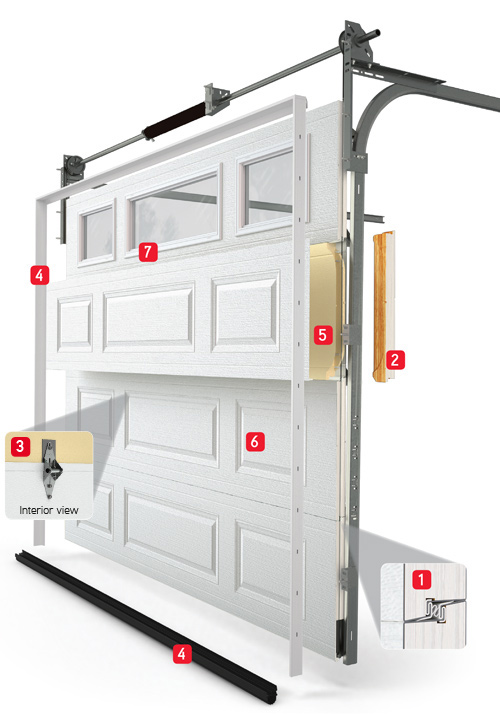
At a glance, most garage doors can seem pretty similar. This is particularly true for insulated garage doors with the same R‑value (or RSI). Does that mean that if two doors have the same RSI, they offer comparable protection? Actually, that’s not the case. If you dig a little deeper and realize that your door does not use effective thermal breaks or top-performing weatherseals, it’s possible that door is costing you money in the form of energy usage.
If it’s time to invest in a new garage door, it’s important to know what to look for when shopping around. Below, we’ll discuss some of the most important features.
Wood end blocks
It might seem odd to recommend a material like wood when talking about energy efficiency, but it is true. A high‑quality garage door will feature section end blocks to keep insulating materials within the door, where they belong. Those same blocks secure the hinges in place, and weatherstripping and a glue joint will connect the interior and exterior metal components.
Most North American garage door manufacturers cut steel about 26 inches wide to the length required for the door. In order to close the ends, they use steel end caps. Sadly, this can create a problem called thermal bridging that allows heat transfer (out in winter, and in during the summer).
At Garaga, the focus is on doing things differently. A completely different injection and manufacturing method is used, where the focus is on individual construction. Wood end blocks are used to close individual sections, because this material does not transfer heat, creating what is called a thermal break.
Door section joints
The door section joints on your garage door can also cause additional energy consumption by bleeding heated or cooled air. One method of attaching the two separate metal sides is to use a metal staple (glued or not glued), but this can cause heat transfer.
Garaga uses a triple-contact PVC weatherseal to connect these two sheets, creating another thermal break. This helps ensure that the two pieces of metal do not touch, and reduces the potential for heat transfer.
The door’s exterior
Your garage door should seal well against the frame. Garaga uses top‑quality, double-lipped PVC weatherstripping around the entire garage door to ensure that when it closes, it creates a tight seal that keeps warm or cool air inside where it belongs. Garaga’s PVC weatherstripping is even arctic-certified, and can stay flexible at temperatures down to -15 °F or -25 °C.
Bottom of the door
While the weatherstripping seal around the top and sides is important, the bottom of the door is equally vital. The PVC used here must remain flexible even during severe cold, or it could harden in place, allowing heated air to escape past it (either into or out of the garage). Garaga uses the highest quality thermal plastic elastomer (TPE) PVC to create a weatherseal here that stays flexible in temperatures as cold as -52 °F (-62 °C).
In the end
When it comes right down to it, energy efficiency is a vital consideration for anyone considering the purchase of a new garage door. However, it is not a simple thing – there are many different factors that go into creating a garage door’s efficiency that go well beyond the R‑value of the material within the door itself.
It is important that anyone considering the purchase of a door take the time to examine the door’s construction, and to ask questions about the weatherstripping materials, thermal breaks built into the door, and the materials used to construct the door in the first place.
Contact us at any time by calling 506-450-3031. We can provide you with expert advice and guidance in choosing your next garage door. We’d also be happy to send you a quote by email, or show you around our showroom in person. Feel free to visit our Design Centre, and check out the options in our image gallery as well.






Add new comment